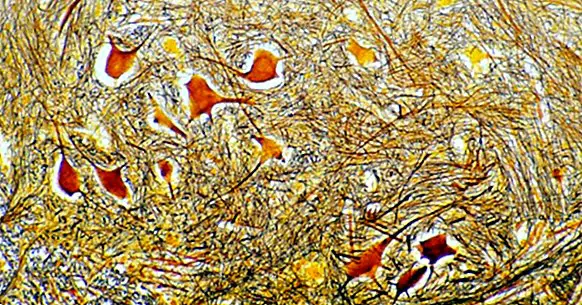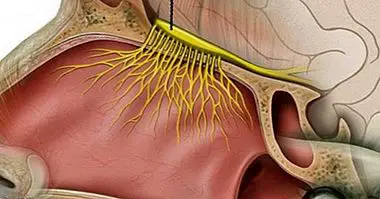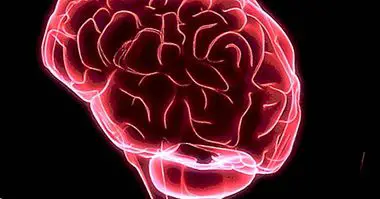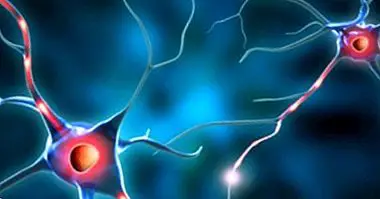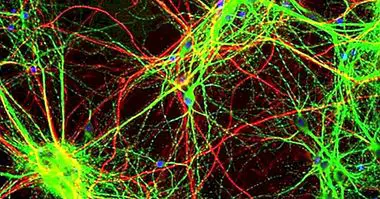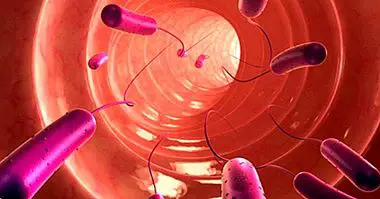Enteric Nervous System: parts and functions
The enteric nervous system is the part of the autonomic nervous system responsible for regulating gastrointestinal vital functions. Among these functions is the regulation of the esophagus, stomach and colorectal functions; which in turn implies the absorption and digestion of nutrients, as well as the maintenance of protective mucous membranes. The operation of this system is the most complex of the set of elements that make up the autonomic nervous system.
Next we will see in more detail what is the enteric nervous system and what are some of its main functions and characteristics.
- Related article: "Parts of the Nervous System: functions and anatomical structures"
What is the Enteric Nervous System?
The enteric nervous system is the cellular structure responsible for controlling our gastrointestinal functions. The above includes the mobility, secretion, local immunity and inflammation of the organs that make up the digestive system .
In other words, the enteric nervous system is responsible for regulating important functions for the intake, absorption, metabolism and digestion of food. It is also responsible for preventing diseases related to these activities.
The enteric nervous system originates in the cells of the neural crest (structure generated during embryonic development), which, in turn, is divided into two large branches of intertwined nerve cells. These branches are called "submucosa de Meissner" and "myenteric de Auerbach", and make up the two main components of the enteric nervous system.
This system is recognized as the most complex part of the peripheral nervous system and It is composed of a high concentration of neurons and glial cells . In fact, it contains the longest collection of neurons that are outside the brain.
- Maybe you're interested: "Autonomic nervous system: structures and functions"
Origins and development of this system
The enteric nervous system is formed from embryonic development, from two main processes: cell proliferation and its differentiation with the great variety of glial cells and neuronal variants that make up the organism.
From the fourth week of gestation, a part of the cells of the neural crest, which give rise to the majority of the enteric nervous system, they migrate through the entire digestive tract .
The other part of the same cells, which contribute less to the formation of the SNE, migrate from the cranial region to the caudal region (ie, from the head to the opposite end). The latter gradually extend through the gastrointestinal tract of the embryo in all its components:
- Previous bowel , which later forms the esophagus, the stomach and the duodenum (connective structure of the stomach with the one in charge of regulating the absorption of substances: the jejunum)
- Middle intestine , which will originate the small intestine, including its first proposal called "blind"; the ascending colon, the appendix and a part of the transverse colon, called "proximal segment".
- Posterior bowel , which forms a part of the transverse colon called "distal portion", as well as its descending part, the sigmoid (parts of the colon that have the shape of "S") and the rectum.
Components of the SNE
As we saw earlier, the enteric nervous system is divided into two main segments that arise from the neural crest. Each one of them contains a great variety of glial and nervous cells, and they are in charge of regulating the intake, absorption and metabolism of everything we eat. These segments, according to Oswaldo, et al. (2012), are the following:
Meissner submucosal plexus
It develops mainly in the small intestine and colon, and It is responsible for regulating digestion and absorption in music and blood vessels .
Myenteric plexus of Auerbach
It is found throughout the digestive tract, and is responsible for coordinate the activity of the muscle layers of said organ .
4 types of neurons that make it up
The large number of enteric neurons in the healthy adult small intestine remains constant for most of adult life, which seems to be the result of a process of continuous renewal of neurons in the intestine (Kulkarni, S. et al, 2017) .
The neurons that are part of the enteric nervous system, and therefore are responsible for regulating our gastrointestinal activity are the following (Oswaldo, et al, 2012):
1. Primary intrinsic afferent neurons
Being afferent, they are neurons that transport nerve impulses from the organs to the central nervous system.However, being primary neurons, they do not conduct sensory information directly, but they do so through other cells located in the enteric epithelium (the cellular tissue that covers the enteric nervous system). That is to say, its activity is mainly that of sensory transducers and in this way regulate physiological functions of the digestive tract.
2. Motor neurons
As its name says, it is responsible for activating the muscle layers that make up the digestive tract as well as blood vessels and some glands. They are in turn divided into excitatory motor neurons (for example, acetylcholine), or inhibitory motor neurons (such as nitric oxide or GABA). The latter, the inhibitory neurons, are responsible for regulating water secretion, blood flow and the release of electrolytes.
3. Interneurons
These are the nerve cells responsible for connecting the primary intrinsic afferent neurons with the motor neurons. They can be ascending or descending , according to whether they act from the head to the opposite extreme, or in the opposite direction.
5. Neurons intestinofugas
Its extensions are located outside the digestive tract and connects with the nerve ganglia to form a new ganglion called "prevertebral". Its main function is to warn about changes in bowel activity, so that it's about mechanoreceptors (Secondary neurons that trigger action potentials before mechanical stimuli).
Main functions of the SNE and associated pathologies
According to Furness, 2012, the main functions performed by the enteric nervous system as a whole are the following:
- Determine the movement patterns of the gastrointestinal tract.
- Control the secretion of gastric acid .
- Regulate the movement and the fluids that cross the epithelium.
- Modify blood flow locally
- Modify and regulate the absorption of nutrients.
- Interact with the intestinal endocrine system and also with the immune system.
- Maintain the integrity of the epithelial barrier that divides the cells of the intestine.
Improper operation of this system affects the functions described above. For the most part, the inadequate functioning of the SNE neuropathies are related that make difficult the control of the muscular activity and the movement of the mucous fluid . The above is reflected in different diseases of the colon and digestive tract.
In addition, the inadequate functioning of the SNE can be of congenital origin or acquired during the postnatal development. Generally, the latter occurs due to a secondary medical condition that ends up significantly damaging the functioning of the SNS, although it can also occur due to an iatrogenic effect of some drug, or a neuropathology induced by drug use.
Bibliographic references:
- Kulkarni, S., Micci, M-A., Leser, J., Shin, Ch., Tang, S-Ch., Fu, Y-Y., ..., Pasricha, P. (2017). Adult enteric nervous system in health is maintained by a dynamic balance between neuronal apoptosis and neurogenesis. Proceedings of the National Academy of Science of the United States of America, 114 (18): E3709-E3718.
- Furness, J. (2012). The enteric nervous system and neurogastroenterology. Nature Reviews Gastroenterology & Hepatology, 9: 286-294.
- Oswaldo, J., Frank-Márquez, N., Cervantes-Bustamante, R., Cadena-León, J., Montijo-Barrios, E., ... Ramírez-Mayans, J. (2012). Enteric nervous system and gastrointestinal motility
- Grundy, D. and Schemann, M. (2007). Enteric nervous system. Current Opinion in Gastroenterology, 23 (2): 121-126.

